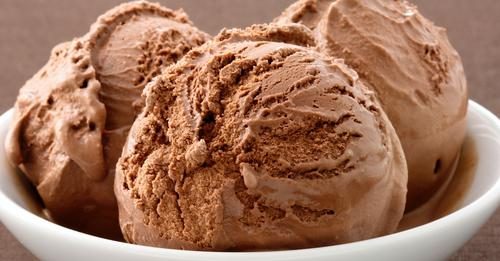Who Invented Ice Cream? The Delicious Ice Cream History
Most people think of ice cream as a modern invention. Somehow, we cannot picture folks from the 17th century enjoying a delicious ice cream cone on a hot summer’s day… Well, they didn’t have cones, but they did have ice cream. Which is crazy to think about, as refrigerators (never mind freezers), were not even invented back then. So how was it invented? Read on to find out!
;Resize,width=742;)
Despite what the name says, ice cream is not just frozen cream. If you were to freeze cream now, it will be rock hard and not very tasty. This is because the cream contains large water crystals that make it grainy. With smaller crystals, the mixture would be smoother and less icy. To get these smaller ice crystals, you add sugar. This not only creates the formation of smaller ice crystals, but also lowered the freezing point of ice cream. But this still does not explain how you make ice cream without a freezer… The problem was solved with some basic chemistry. The initial method of making ice cream was adding sugar to cream, and placing the mixture into a box of ice (or even snow). But it was soon discovered that once salt is added to the ice, you lower the freezing point of the ice itself, meaning you reach a temperature cold enough to freeze your sweet mixture.
History records say that the Arabs already knew about this salting method centuries ago and by the 17th century the news has already reached Italy, where they were using the method to make iced fruit desserts! The ‘ice cream’ term that we use today, was first seen in 1672, in a document by Charles II. The first recipes for ice cream appeared as far back as 1682 and 1692. The first recipe was for an orange-flavored ice cream called ‘Snow of Orange Flowers’, and the second was a plain ice cream with a very unrelated name of English Cheese.

In 1843, Nancy Johnson (an American from Philadelphia) revolutionized the way ice cream is made with her patented freezer invention. It was a cylindrical vessel that held the ice cream mixture, within a container that held the freezing brine. There was a shaft that protruded on the outside which needed to be cranked continuously. William G. Young, another fellow American, improved on Nancy’s design in 1848, by adding a modification that allowed the ice cream mixture to rotate within the freezing brine, making the cooling process much more efficient. This change meant that ice cream could now be frozen in large quantities and by the 1850s, milk dealer Jacob Fussel became the first ‘large-scale- manufacturer of ice cream, by using leftover cream he had available. But it’s no longer just a frozen mixture of cream and sugar. These days there are several styles of ice cream, besides the standard Philadelphian style. The French (or custard) style contains eggs, making it exceptionally rich. You also get reduced-fat, nonfat, and even non-dairy and vegan ice creams.
Today, America is still the largest consumer of ice cream, with each American eating more than 20 pounds of ice cream per year. The industry is forever growing as people’s palates and curiosities expand. Despite this assortment of ice cream varieties available, the two most popular flavors are still the classic vanilla and chocolate.
What is your favorite flavor? Tell us below!
;Resize,width=767;)
;Resize,width=712;)

;Resize,width=712;)
